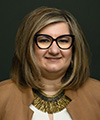TSL 108 - Linguistic Structures
Course Description
Even in a communicative context, second language teachers need a basic awareness about the structure of language and possible differences between the first and second language they are teaching. The three basic language structures of phonology (sound structure), morphology (word structure), and syntax (sentence structure) will be illustrated on a number of levels.
Course Details
Broad Learning Outcomes
By completion of this course, successful students will be able to:
- Distinguish various linguistic structures that are common to all languages and specific to the English language;
- Apply linguistic knowledge to practical applications of teaching a second language;
- Explore and examine advanced topics in second language acquisition and second language learning; and
- Connect linguistic theory to the practice of teaching second languages to adult learners as well as children.
Supporting Learning Outcomes
Upon successful completion of this course, you will be able to:
- Identify the various linguistic subsystems (i.e. phonetics, morphology, syntax) and compare different languages using these linguistic subsystems;
- Examine the process of language formation through sounds, words and sentences;
- Differentiate between linguistic principles (theoretical) and pedagogy (practice);
- Analyze how social aspects of language impact language change and language policies; and
- Define communicative competence and apply it to the second language classroom.


